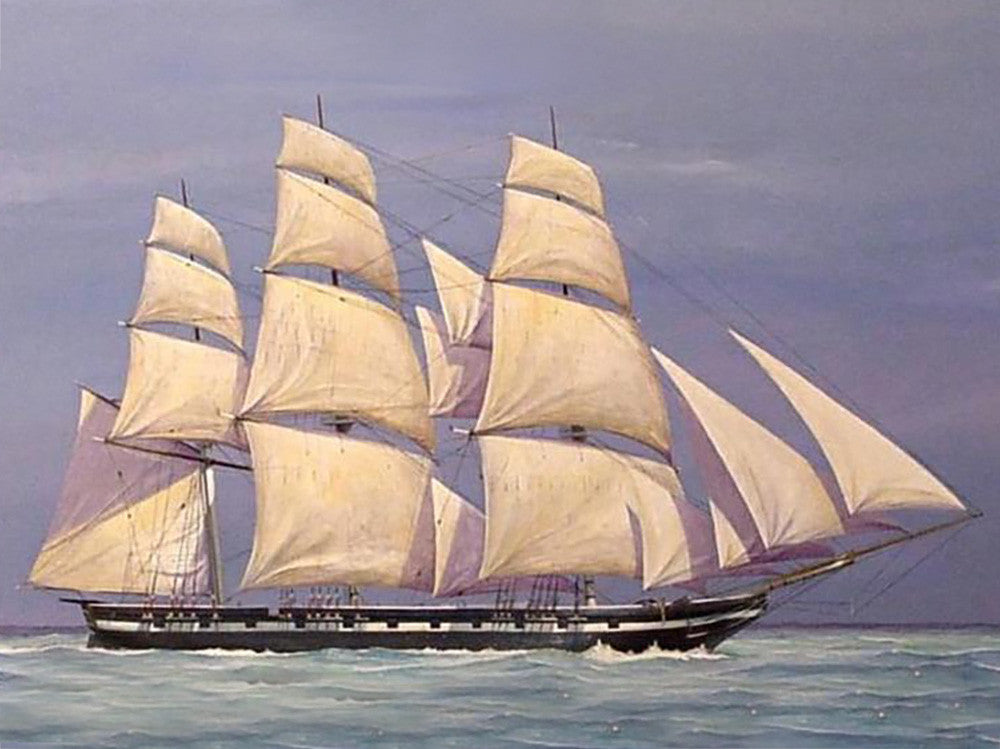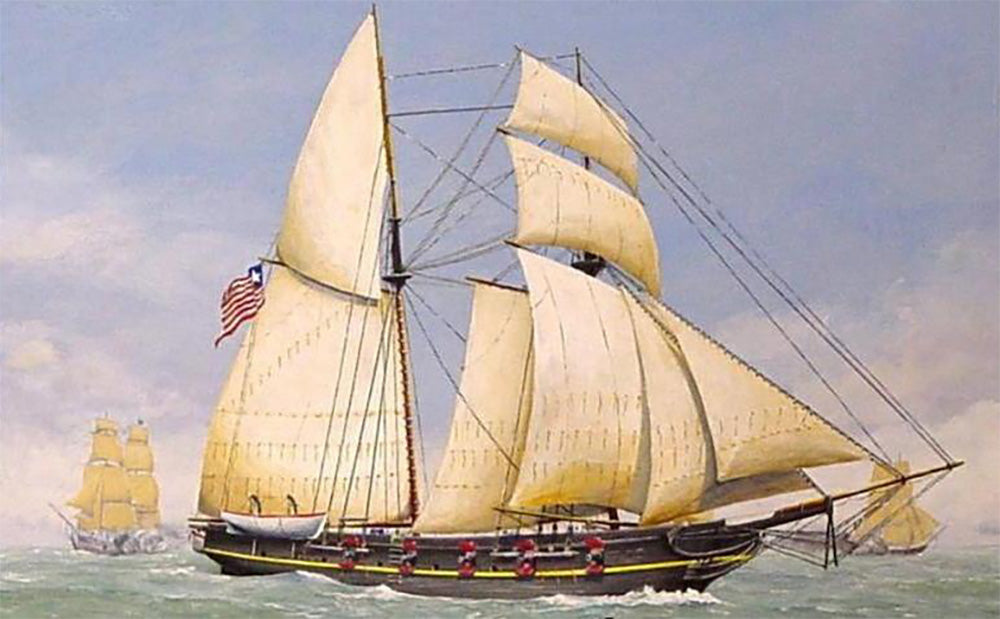Outsized but never out-determined, the Texas Navy played a significant but uncelebrated role in the history of the young Republic.
The Republic of Texas Navy: Small and Scrappy Seafarers

Though the landmass of the great state of Texas sprawls far and wide, the state boasts 367 miles of undulating coastline (3,359 miles of tidal shoreline, if counting the outer coast, offshore islands, sounds, bays, and tidal portion of rivers and creeks). And in the Revolutionary days of yore, while volunteer and regular soldiers banded together to create the Texian Army and defend the land, someone had to take to the sea. Enter: The Republic of Texas Navy — the official navy of the Republic of Texas.

In November 1835, when the first government of Texas was formed with Henry Smith as governor, a bill was passed to form a navy composed of privateers (an armed ship owned and officered by private individuals holding a government commission and authorized for use in war). The Republic of Texas had barely been born and now had to face defending itself from the overwhelming military operations of Mexico. Even so, the relationship between Texas government and its navy began as a tenuous one, with President Houston fearing that Texas would be drawn into another war with its southwardly neighbors. However coastline residents had valid reason to fear the Mexican navy, as sections of the Texas coast were blockaded by the country the very month that the bill for Texas’ own fleet was passed.

Thus the Republic of Texas Navy was officially launched in 1836 with the purchase of four vessels, the Independence, the Invincible, the Brutus and the Liberty (shown below are illustrations of the Independence, top, and the Invincible). Though collectively known as the Big Four, the Republic of Texas Navy was in actuality a rather small and scrappy outfit. Emblazoned with the Republic of Texas Navy flag (shown above; designed to appear as the US flag from afar in order to confuse combatants) and “Fouled Anchor” (an anchor at a slant entwined with a short piece of rope and topped with a five pointed star), the troops performed mighty feats that maintained the young Republic’s independence. The most remarkable of which might have been the 1836 Battle of Matamoros, during which the Texas Navy repeatedly outmaneuvered the Mexican Navy’s Montezuma, eventually running it ashore and forcing abandonment. This Texas victory fractured Mexican troops and forced them to forage for goods in small bands, minimizing the Mexican advantage for years.

The Republic of Texas Navy met its eventual demise in 1845 when Texas became the 28th state of the United States and the remaining ships were transferred to the U.S. Navy. But the Republic of Texas Navy’s short life and impressive reach born from such limited resources reserve a powerful place in state history. Best put by Theodore Roosevelt Jr.: “It's no exaggeration to say that without [The Republic of Texas Navy] there would probably have been no Lone Star Republic and possibly the State of Texas would still be part of Mexico."
Today, the Texas Navy Association is a nonprofit organization which honors individuals’ exemplary service and is headquartered in Galveston, Texas. The honorary Commander-in-Chief? That would be none other than the Texas Governor.
If you’d like to support the Texas Navy Association and participate in its annual activities, you can apply for membership, and enter the ranks as an Admiral or Junior Officer. And if you're in Texas, consider visiting their special exhibits at the Texas Seaport Museum in Galveston, and the Texas Military Forces Museum at Camp Mabry, in Austin.
- CR

Comments
Dianne Erwin:
My husband’s gg-grandfather, Thomas Curry, was in the Texian Navy. I am going to do a report to my chapter of The Daughters of the Republic of Texas next week on the Texian Navy. Do you have any suggestions for visuals for this report?
Thanks!
Dianne Erwin
Sep 30, 2016
Andy Hall:
Shelley:
The Texian Navy made two captures in the weeks before San Jacinto that may have made a contribution to the battle. These were the capture of Pocket, by the Texas schooner Invincible, and the capture of Pelicano, by the schooner Liberty. Both of those vessels were carrying foodstuffs, and Pelicano was carrying a hidden cargo of gunpowder. There is evidence that one or both of these cargoes reached Houston’s army prior to the battle of San Jacinto. Houston himself mentioned the capture of Pelicano in a proclamation he issued on March 31, during the Texian army’s retreat. These events are discussed in some detail in John Powers’ book, The First Texas Navy.
I think it goes too far to say that Houston would not have won at San Jacinto without that support; we simply cannot know that for sure. But there is no question that it was help when his army desperately needed it.
Sep 20, 2016
Shelley Henriksen:
Working on my masters and will be heading for a phd, my topic is the role the Texas Navy played in the battle of San Jacinto. With out the navy, there is no way Sam Houston would have won that battle. I need to know of any resources you can point me to.
Aug 29, 2016
Leave a comment